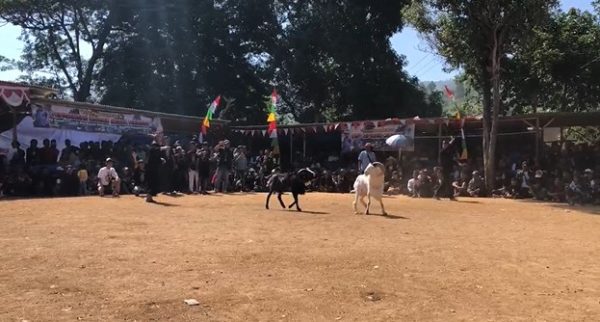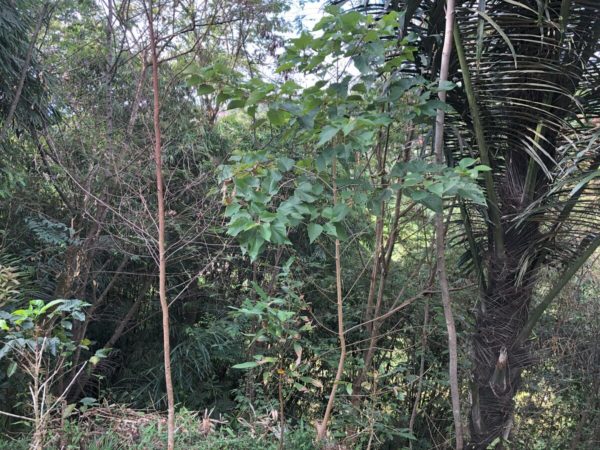
“I train my sheep to run and swim, build their body strength with massages, and provide them with nutritious food,” explains Maman Abdurohman, a farmer and sheep breeder from Ibun Village in West Java. “This includes vitamins, eggs, honey, and leaves like gmelina,” he added.
Like most farmers in this region, Maman is a member of the Sundanese tribe, an ethnic group famed for their performance arts. One of their most iconic traditions is a sheep festival which traces its roots back to the 1800s, when these gatherings offered a way for farmers to meet, barter for livestock, and share their knowledge.
Generations later, the annual sheep show continues to draw the crowds. And now, with support from Trees4Trees, farmers are combining animal husbandry with reforestation efforts; keeping traditions alive, while helping West Java stay green.
The value of tradition
The annual sheep gathering, known locally as kesenian ketangkasan domba, is truly unique. Part livestock auction, part beauty pageant, it features a range of activities to demonstrate the animals’ physical strength, health, agility, and beauty – particularly the size, shape, and curvature of their distinctive horns. Accompanied by traditional Sundanese music, the sheep parade is an unforgettable spectacle.


“The competition aims not only to find the strongest and best-looking sheep,” explains Yeyen Sopian, a farmer from Ibun Village, “but also to preserve this traditional art as part of Sundanese culture. Each competition draws a big crowd, and the winning animals can be worth a small fortune to their owners.
“The better their performance, the higher their price,” says Maman, noting that a strong showing in the event can increase a sheep’s value to around 40 or 50 million rupiah (USD 2,500–3,100). “Actually winning the competition can raise their value to 100 or 200 million rupiah (USD 6,300–12,750),” he adds, with a sense of wonder and excitement.


Planting trees, preserving culture
Key to the animals’ strength is the food they eat. “We use a variety of fodder,” explains Yeyen, “including grasses, plants, tofu, and gmelina leaves, which help them grow big and strong.” Gmelina makes for excellent fodder, along with the leaves of red stinkwood trees. To ensure a steady supply, Maman uses a particular pruning method. “The branches must be pruned just right, so we can use the leaves as fodder without harming the trees,” he says.
“The Ibun community has long grown gmelina trees for their high-nutritious, easily digestible leaves,” says Jeje Sutarja, Trees4Trees’ Unit Manager for the Cirasea Watershed Unit in Bandung. “By providing gmelina trees free of charge, Trees4Trees helps farmers increase tree coverage, which has the triple benefit of supporting the animals’ well-being, preserving traditions, and conserving the natural environment.”


Planting for the future, rooted in traditions of the past
“Farmers already know how to prune correctly by avoiding cuts to the trunk, and we provide additional guidance,” says Alwi Subhan, Trees4Trees’ Field Coordinator for Ibun District, adding that, by educating farmers on pruning methods, Trees4Trees aims to encourage proper leaf harvesting without harming the trees. “For example, before pruning, they need to measure at least 15 to 20 cm from the trunk to prevent damage to the trees,” explains Alwi.
In addition to gmelina, Trees4Trees distributes a range of other tree species to the sheep farmers, including red stinkwood, albizia, mindi, and jackfruit. By providing them with the trees and the know-how they need, Trees4Trees is supporting the preservation of nature and culture in West Java. Together, we are helping traditions stay as strong and valued as the animals themselves.
Writer: V. Arnila Wulandani. Editor: Chris Alexander. Photos: Kemas Duga Muis







